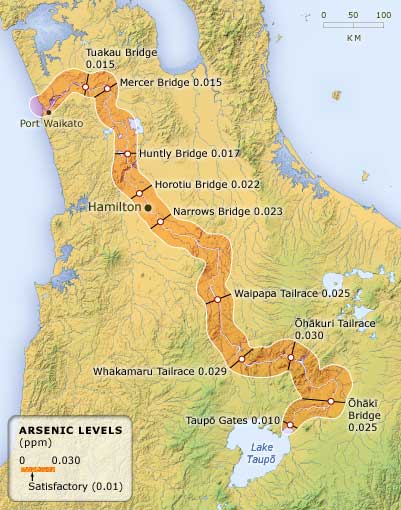
The winding band on this map marks the course of the Waikato River, and its width represents the water’s arsenic content in the period 2000–2004: the wider the band, the more arsenic there is. Arsenic is toxic, and water for human consumption should contain less than 0.01 parts per million (ppm). This is exceeded over most of the course of the river.
Most of the arsenic in the Waikato River comes from waste fluid from the Wairākei geothermal power station. Water treatment at Hamilton removes 80%, leaving the city’s water safe to drink.
Using this item
Te Ara - The Encyclopedia of New Zealand
This item has been provided for private study purposes (such as school projects, family and local history research) and any published reproduction (print or electronic) may infringe copyright law. It is the responsibility of the user of any material to obtain clearance from the copyright holder.
Source: Environment Waikato








Add new comment